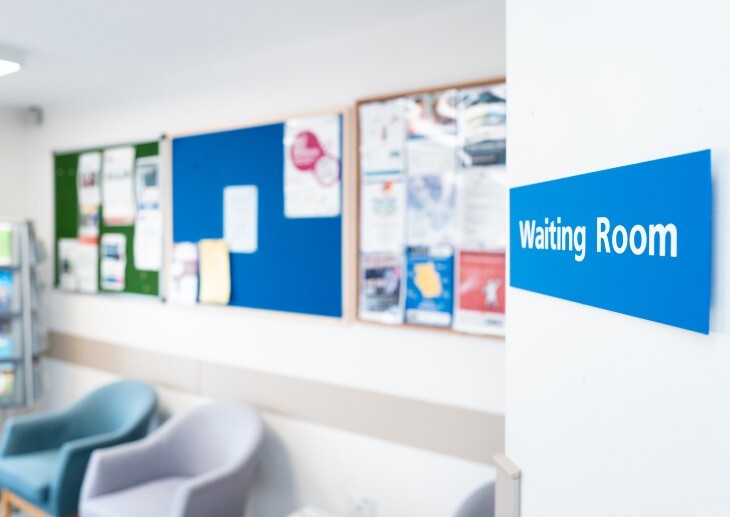Diabetes has been part of the Quality and Outcomes Framework (QOF) since its inception.
It is an area with a solid evidence base and easy to measure numbers relating to control. It is also a large cause of morbidity and mortality and currently has 88 points – more than any other clinical area.
It is also one of the biggest areas of growth. In the first seven years of the QOF the reported prevalence figures increased by more than a third. Around one in 20 people are now diagnosed as diabetic and this trend shows no sign of slowing.
Diabetes has been part of the Quality and Outcomes Framework (QOF) since its inception.
It is an area with a solid evidence base and easy to measure numbers relating to control. It is also a large cause of morbidity and mortality and currently has 88 points – more than any other clinical area.
It is also one of the biggest areas of growth. In the first seven years of the QOF the reported prevalence figures increased by more than a third. Around one in 20 people are now diagnosed as diabetic and this trend shows no sign of slowing.
This is a very large area of workload for practices and this increase has not been reflected in the points available. This year, in fact, the number of points has fallen by four and a couple of the upper thresholds have been raised. Most of the lower thresholds have also been raised, cutting the points score for practices that do not hit the top thresholds.
Perhaps it is its prominence that has led to the many changes made to the indicators over the years. Most of the indicators have changed at some point.
There are no longer any indicators for the measurement of blood pressure, cholesterol or HbA1c although the results of these investigations are still looked for. Smoking was moved to its own area a few years ago. Patients with diabetes are also included in the population that should be screened for depression once in each 15 months.
The basis of all the indicators is the register of patients with diabetes. The coding has been quite restrictive in the past with only the codes C10E and C10F – for type one and type two diabetes respectively – being counted towards diagnosis. There are a variety of codes with exactly the same text which do not count towards the register – most notably C108 and C109 which could deprive practices of rightly earned income. It is worth a periodic search for these codes to make sure none have slipped into the system.
Things have got a bit simpler this year with cases which are not clearly type one or type two allowed to be coded simply as C10 (diabetes mellitus) although it is expected that a more specific code is used as the diagnosis becomes better defined. There are six points for compiling the register.
There is no difference in the indicators between type one and two diabetes – the requirements are the same for both. The guidance on diagnosis reflects the World Health Organization criteria that diagnosis should be by two blood measurements.
These tests can either be a fasting glucose of greater than seven mmol/L or, for the first time, diagnosis can also be made from two HbA1c measurements of greater than 48mmol/mol – equivalent to 6.5%.
From a QOF point of view this may be a useful method of diagnosis as patients would automatically have an HbA1c at the time of diagnosis. Trials have shown that the HbA1c diagnostic criteria are also likely to increase the number of patients diagnosed.
This is good for individual practices if they can increase their prevalence but will increase the work that is required. Patients will automatically be exempt from missing blood sugar targets for nine months from the date of diagnosis.
There are a variety of observations that should be undertaken every 15 months.
As usual with this timescale codes entered from January to March will count in two separate QOF years.
BMI should be measured – if this is over 30 then the patient will automatically appear in the obesity register. There should also be a record of retinal screening although this would normally happen outside the practice at an optician or through a local retinal screening programme. It is simply a matter of ensuring that this is coded by the practice when the results arrive. There are five points for recording retinal screening and one point for measuring BMI in 90% of patients.
Renal function should also be measured and a serum creatinine or eGFR recorded in the notes. Chronic kidney disease is more common in patients with diabetes so there is quite a large crossover between the diabetes and CKD registers. The eGFR will count for both but will only gain a single point in the diabetes domain.
Another measurement that appears in both areas is the measurement of urinary protein for three points. This is not needed if proteinuria has been detected during the year. While the business rules will still allow for dipstick testing of microalbuminuria NICE now recommends a laboratory albumin:creatinine ratio (ACR) measurement as a more reliable test.
A raised ACR does not automatically mark a patient as having microalbuminuria. This must be coded separately as the context of the test is essential to give an accurate diagnosis. This is important for the next indicator which requires that ACE inhibitors are used where a patient has microalbuminuria.
If patients do not tolerate an ACEI then an angiotensin two inhibitor can be used. In order for this prescription to be recognised for the QOF results there should be an ACEI exception code. If neither class of drug is tolerated by the patient then two separate exception codes will be required. These will need to be repeated annually except in the case of true allergy. There are three points available if 80% of eligible patients have an appropriate prescription in the last six months of the QOF year.
Foot care is a vital part of diabetes treatment. Prior to last year there were separate indicators for foot pulses and neurological testing. The indicator for measuring foot pulses has been removed and replaced with an indicator about the overall assessment of foot risk. The assessment of this risk will in any case require testing of foot pulses and assessment of sensation in the feet.
Each foot’s risk level should be assessed as being low. medium, high or having active ulceration. Normal pulses corresponds to low risk. Loss of pulses or neuropathy is considered medium risk and if skin changes are also present this represents high risk.
Essentially this is a combination of both of the old indicators so it is a little surprising that the foot sensation indicator also remains. There should be as assessment of neuropathy coded in addition to the final risk assessment mentioned above.
There are three points for measuring neuropathy in 90% of patients and a further four for the risk stratification.
While there is no longer an indicator relating to the measurement of cholesterol there is still an outcome indicator about the serum level of cholesterol. This should be less than five. Exceptions can be made if the patient is intolerant of statins. While other cholesterol lowering drugs, such as fibrates or exetimibe, are available they are not routinely recommended by NICE and in case of intolerance only an exception code for statins is required. There are six points for treating seventy five percent of patients to target.
The majority of the points in the diabetes area are based around the outcome indicators for glucose and blood pressure control. In both these areas there are tiered achievement indicators. Multiple indicators are used with different measurement thresholds.
The blood sugar thresholds are based on the newer HbA1c measurements in millimoles per litre rather than the older percentage measurements. The newer units are more consistent between laboratories (inconsistency was one of the reasons for changing) and so the correlation between old and new figures may vary slightly. The new thresholds are set at 59, 64 and 74 mmol/mol – roughly equivalent to 7.5%, 8% and 9%.
The upper threshold of the hightest target is set at 50% of patients. As the lower threshold is 40% this 10% of patients is worth all seventeen points. The payment per patient declines at the higher blood sugar targets.
There are similar thresholds for blood pressure at 150/90 and 140/80. These were split from the previous single blood pressure target at 145/85. The points were also split with eight points for the higher threshold and 10 for the lower one.
The effect of these tiered thresholds is that where patients achieve the lower indicator they will earn the cash from both. The incentives thus increase as the patient levels get lower.
Exception reporting works in the opposite way. Because the QOF rules look for achievement before exception reports, a patient who is just above the lowest threshold with an exception code will still count as an achievement for the higher thresholds. A patient above the highest blood sugar threshold will be exception reported for all three indicators.
In a situation where the number of patients with exception reports is closely monitored it could be considered more efficient to exception report patients above the highest thresholds. For the most part these exceptions are likely to be about maximal tolerated treatment. The burden of medication in diabetes is high – there are many patients who simply do not want to go on to have insulin or other more intensive treatments.
As always in achievement indicators only the last measurement within the QOF year is counted towards the targets. Patients with high readings can have treatment adjusted and the test repeated (although HbA1c may take over three months to change significantly). There is a disincentive to repeat low readings as this can only harm the score at the end of the year.
The final indicator in diabetes awards three points for 85% of patients having an influenza vaccination in the previous flu season. With so few points for such a large number of patients it is likely that payments through the directed enhanced service will be considerably greater than from the QOF.
Diabetes is an area with a lot of points. These are concentrated in just a couple of outcome measures – there are 59 points for the control of blood pressure, cholesterol and blood glucose. As none of these outcomes have changed significantly this year it should be relatively easy to identify patients in whom further intervention is required.
Where targets were missed last year there should be still plenty of time to reach the targets this year. Measurement early in the QOF year allows time to change treatment and test again.
Gavin Jamie, Swindon GP, Webmaster of the QOF database





